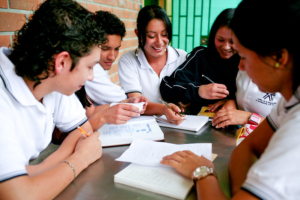 Vitoria Reyes has been involved with the Latin American Leadership Academy (LALA) since her high school days in Brazil. Now pursuing her undergraduate studies in the United States (U.S.), she annually facilitates LALA’s camps and mentors the next generation of Latin American leaders. She describes LALA’s mission as “trigger(ing) change and development in Latin America through fostering young change-makers and leaders.”
Vitoria Reyes has been involved with the Latin American Leadership Academy (LALA) since her high school days in Brazil. Now pursuing her undergraduate studies in the United States (U.S.), she annually facilitates LALA’s camps and mentors the next generation of Latin American leaders. She describes LALA’s mission as “trigger(ing) change and development in Latin America through fostering young change-makers and leaders.”
Founded in 2017, LALA has successfully established a network of nearly 2,000 young leaders spanning South America and the Caribbean. With a vision extending to 2024, the organization aims to annually enroll 1,500 high-school-aged students. LALA is actively shaping the future by tackling the challenges affecting underserved youth across the region. To overcome these obstacles, the organization has meticulously tailored its programs, addressing each barrier comprehensively. Through these efforts, LALA is fostering a generation of empowered leaders.
Barrier 1: Lack of Financial Resources
As of 2022, the U.N. estimated that 45% of Latin American children and adolescents lived in poverty. This places youth at a higher risk of poverty compared to the broader population, of which 32.3% are poor. In addition, the pandemic led to decreased education rates and youth employment, and these factors have not yet fully recovered. Consequently, financial resources have become an even more significant barrier to the success of Latin American youths.
While 90% of LALA’s students receive financial aid from the organization to support their membership, the assistance doesn’t end there. According to Reyes, “They (LALA) hire a lot of people who are not college graduates, or maybe not even in college yet, which is very, very unusual, especially here in Brazil.” In fact, she works as a camp facilitator. Reyes explains, “It’s like a job, so I get paid to do it. We have training; I have to report to someone. But it’s also fun, ’cause it’s just like being with people that you really like and doing work that is really meaningful to you.”
Reyes further describes how LALA is growing the future by boosting the prospects of underserved students in Latin America: “I have friends that are facilitators and I know that the payment they receive really, really helps them to pay rent, or to have some money to help their families.”
Barrier 2: Lack of Community Support
Many underserved students in Latin America don’t have access to a network of informed, successful adults who can provide guidance and share opportunities. That’s why LALA places a strong emphasis on networking and mentorship within the organization. LALA’s 2021 impact report highlights, “Our mentors and donors do not see young, underprivileged LALA students as charity cases, but as awe-inspiring future leaders they can relate to.”
For Reyes, the power of LALA’s student community surpasses formal networking programs. She states, “Everyone in Lala is really, really devoted to being there, to being part of the community, to helping each other.” She describes how LALeaders (the Academy’s alumni) support one another, from offering internships to providing a couch to sleep on in a foreign country.
Barrier 3: Lack of Career Opportunities
The World Bank estimates that 40 million young people who were jobless in 2021 would have been employed without the COVID-19 pandemic. One of the most affected countries in the world, Brazil experienced a 6% decline in youth employment in this period. This intensified the need for youth professional development in Latin America.
In 2021, Reyes participated in LALA’s Career Internship Program. For 10 weeks, she and her peers honed skills like resume writing and networking before connecting with organizations that aligned with their interests for internships. The program successfully matched 56 students with 25 organizations in six countries, several of which were founded by LALA alumni.
Barrier 4: Lack of University Opportunities
Recognizing the importance of education, LALA is growing the future by providing application support for member students seeking undergraduate education. LALA’s assistance has resulted in member students receiving more than $20 million in high school and university scholarships. Many LALeaders, including Reyes, pursue studies abroad. In 2021, over a quarter of LALeaders enrolled in undergraduate programs studied outside their home countries.
Barrier 5: Mental Health/Intrapersonal Development
More than 25% of the total disease burden in Latin America and the Caribbean is mental or neurological, and 5% of Latin America’s population suffers from depression. Despite this, more than half of depressed people do not seek treatment and less than 2% of the region’s health care budget is allocated to mental health.
LALA is growing the future of mental health and intrapersonal development by offering compassion cultivation training and encouraging students to explore their personal growth. Reyes describes some of the activities conducted during the camps she has facilitated, such as discussions on vulnerability inspired by Brene Brown’s work, strategies for building meaningful connections and active listening.
More significantly, LALA provides students with a safe space to be themselves: “LALA is always this place where people say, ‘I feel home when I’m here’.” She shares that LALA was the first community where she found acceptance and support from like-minded individuals.
As a reminder of how LALA is shaping the future, Reyes shares a quotation from Thich Nhat Hahn that resonates with her and appears at the top of many Latin American Leadership Academy learning materials: “It is possible the next Buddha will not take the form of an individual. The next Buddha may take the form of a community, a community practicing understanding and loving kindness, a community practicing mindful living.”
–Faye Crawford
Photo: Flickr
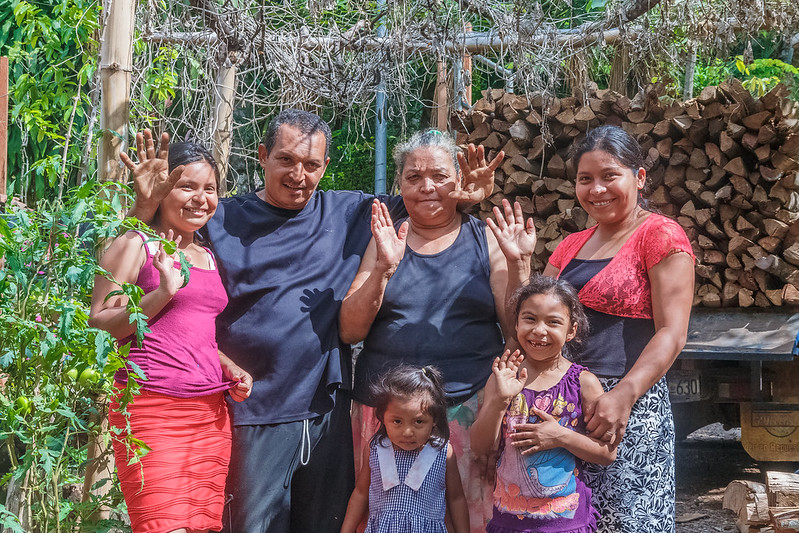 El Salvador is a small nation in Central America sharing borders with Honduras and Guatemala. A poor education system, high crime rate (namely because of gang warfare), homelessness and high migration, all represent the social issues in El Salvador. These social problems have been a catalyst for poverty in El Salvador,
El Salvador is a small nation in Central America sharing borders with Honduras and Guatemala. A poor education system, high crime rate (namely because of gang warfare), homelessness and high migration, all represent the social issues in El Salvador. These social problems have been a catalyst for poverty in El Salvador,  Artificial intelligence (AI) is grabbing headlines across world news. What isn’t getting much attention is how AI in Africa can and already is helping to alleviate poverty. These progressive trends, however, are not without potential risks. The following is a look into some of the pros and cons of AI reliance in Africa.
Artificial intelligence (AI) is grabbing headlines across world news. What isn’t getting much attention is how AI in Africa can and already is helping to alleviate poverty. These progressive trends, however, are not without potential risks. The following is a look into some of the pros and cons of AI reliance in Africa. Due to its rigorous entrance processes and societal emphasis on university prestige, South Korea spends a large portion of its annual GDP on higher education and the costs associated with college admissions preparation. Acceptance into one of the nation’s high-ranking “SKY” institutions can help differentiate applicants in an already competitive job market, as 70% of South Koreans have a college education. Here are five facts about the higher education system in South Korea:
Due to its rigorous entrance processes and societal emphasis on university prestige, South Korea spends a large portion of its annual GDP on higher education and the costs associated with college admissions preparation. Acceptance into one of the nation’s high-ranking “SKY” institutions can help differentiate applicants in an already competitive job market, as 70% of South Koreans have a college education. Here are five facts about the higher education system in South Korea: Book banning has become a dominant form of censorship around the world, as governments try to control the internet and technology available for their citizens. Associations similar to Amnesty International are fighting against book banning and censorship to protect democracy, access to education and information and progressive and forward-thinking in the 21st century. Countries across the globe such as China, Bangladesh and Egypt commonly practice book banning to restrict education and allow censorship. Book banning has many implications in terms of access to education and further restricting vulnerable populations from thriving. Fortunately, international organizations are actively working against book banning and censorship to ensure that vulnerable populations have access to a well-rounded education.
Book banning has become a dominant form of censorship around the world, as governments try to control the internet and technology available for their citizens. Associations similar to Amnesty International are fighting against book banning and censorship to protect democracy, access to education and information and progressive and forward-thinking in the 21st century. Countries across the globe such as China, Bangladesh and Egypt commonly practice book banning to restrict education and allow censorship. Book banning has many implications in terms of access to education and further restricting vulnerable populations from thriving. Fortunately, international organizations are actively working against book banning and censorship to ensure that vulnerable populations have access to a well-rounded education.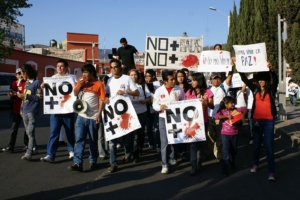 Since the Mexican government declared war against drug cartels in 2006, nationwide violence between cartels, police and the military has been taking a steep toll. The
Since the Mexican government declared war against drug cartels in 2006, nationwide violence between cartels, police and the military has been taking a steep toll. The 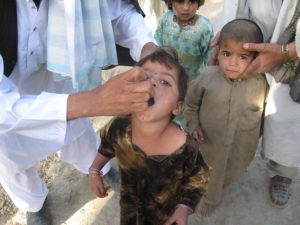 Since the early 2000s, Afghanistan’s disease prevention and
Since the early 2000s, Afghanistan’s disease prevention and 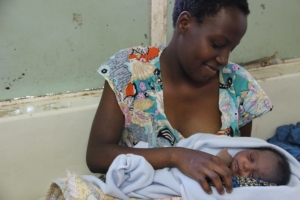 The African Court on Human and People’s Rights had to make a pivotal decision regarding the right to education for pregnant students in Tanzania. On November 19, 2020,
The African Court on Human and People’s Rights had to make a pivotal decision regarding the right to education for pregnant students in Tanzania. On November 19, 2020,  Haiti struggles with many issues:
Haiti struggles with many issues: 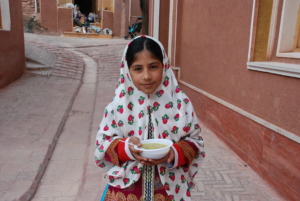 Child poverty in Iran runs rampant among young residents. In 2020,
Child poverty in Iran runs rampant among young residents. In 2020, 